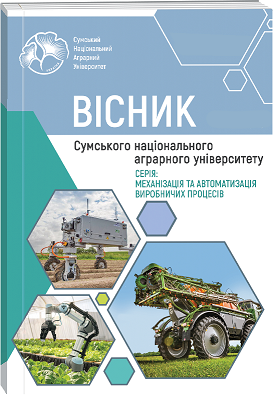DEVELOPMENT OF NATURAL FLAVOR ADDITIVE «MEAT FLAVOR»
Abstract
The article describes the production technology of natural taste-aromatic additives with unique and stable sensory properties. The technology of additives in this study is based on the formation of aromatic substances by the interaction of reducing sugars and free amino acids during thermal processing of hydrolyzates of milk plant extracts (Maillard reaction). As a result, the accumulation of intermediate and final products of the reaction, possessing aromatic and taste characteristics, as well as a possible change in the color of the reaction products. For the production of natural flavoring additives, a milkplant extract from the powder of corn cobs is used, and whey is selected as an extractant. To obtain precursors of taste and aroma (free amino acids and low-molecular peptides), the milk-plant extract was hydrolyzed with the help of the enzyme preparation «Protolad». The paper investigated the effect of heat treatment parameters (Maillard reaction) of hydrolyzates of milk plant extracts: temperature – (110–140) °С; duration – (5–35) min. It was found that when the duration of heat treatment increases, the content of amine nitrogen in the samples decreases under all experimental temperature regimes. The lowest loss of amine nitrogen content is characterized by standards processed at a temperature of 110 °C for a duration of 35 minutes. The samples treated at a temperature of 140 °C for 35 minutes are characterized by the highest content of amine nitrogen (by 45.2% of the original value). It was investigated that at a temperature of 120 °C and a duration of 25 min. there is a decrease in sugar content by 22% from the initial value. When the temperature conditions are increased (130–140 C) and the duration of the heat treatment is up to 35 min. the content of sugars decreases by 36-40% of the original value. The study of the change in color intensity allows to determine at which stage the Maillard reaction is located, because the darkening of the samples during heat treatment indicates the formation of the final products of the reaction (melanoids). The latter, in turn, are not desirable, as the biological and food value is lost. The results of determining the optical density of the samples showed that the optical density indicator changes from 15 min. at a temperature of (110–140) °С. High indicators of optical density in samples processed for 35 minutes at a temperature of 130–140 °C indicate the beginning of the caramelization process (formation of melanoids). Sensory analysis based on selected descriptors determined the change in taste and aroma characteristics from desirable to unpleasant in the samples during heat treatment. The generalized results of the sensory analysis of the samples after heat treatment show that the process of formation of the desired taste and aromatic characteristics occurs at a temperature of 120 C after processing for 25 minutes. At the same time, descriptors such as similar to meat and broth prevail, the smell and taste profile of the samples is as close as possible to the «ideal» profile. Maltodextrin (DE 2–12) is used in the technology of flavor and aroma additives to ensure the stability of the taste and aroma profile of the additive during storage and ease of dosing and use in various food products. A technological scheme for the production of natural taste-aromatic additives «Meat flavor» has been developed.
References
2. Laroque, D., Inisan, C., Berger, C., Vouland, E., Dufosse, L., & Guérard, F. (2008). Kinetic study on the Maillard reaction. Consideration of sugar reactivity. Food Chemistry, 111(4), 1032–1042. doi: 10.1016/j.foodchem.2008.05.033.
3. Lobine, D., Rengasamy, K. R., & Mahomoodally, M. F. (2022). Functional foods and bioactive ingredients harnessed from the ocean: Current status and future perspectives. Critical Reviews in Food Science and Nutrition, 62(21), 5794–5823. doi: 10.1080/10408398.2021.1893643
4. Shang, Y. F., Cao, H., Wei, C. K., Thakur, K., Liao, A. M., Huang, J. H., & Wei, Z. J. (2020). Effect of sugar types on structural and flavor properties of peony seed derived Maillard reaction products. Journal of Food Processing and Preservation, 44(3), e14341. doi: 10.1111/jfpp.14341.
5. Synenko, T. P., Frolova, N. E., Sokolenko, V. V., & Huba, S. O. (2022). Doslidzhennia vplyvu typu tsukru na reaktsiiu Maiiara v modelnykh systemakh iz hidrolizatom syrovatkovykh bilkiv [Study of the effect of sugar type on the Maillard reaction in model systems with whey protein hydrolyzate]. Tavriiskyi naukovyi visnyk. Seriia: Tekhnichni nauky, 1, 135–146. doi: 10.32851/tnv-tech.2022.1.15 (in Ukrainian).
6. Tarrah, A. (2022). Probiotics, Prebiotics, and Their Application in the Production of Functional Foods. Fermentation, 8(4), 154. doi: 10.3390/fermentation8040154
7. Ukrainets, A. I., & Frolova, N. E. (2019). Analitychna informatsiia pro stan vykorystannia aromatyzatoriv u sviti i v Ukraini ta mozhlyvosti rozvytku vitchyznianoho vyrobnytstva [Analytical information about the state of use of flavorings in the world and in Ukraine and the possibilities of development of domestic production]. Naukovi pratsi Natsionalnoho universytetu kharchovykh tekhnolohii, 2(25), 251–260. doi: 10.24263/2225-2924-2019-25-2-27 (in Ukrainian).
8. Wei, C. K., Thakur, K., Liu, D. H., Zhang, J. G., & Wei, Z. J. (2018). Enzymatic Hydrolysis of Flaxseed (Linum Usitatissimum L.) Protein and Sensory Characterization of Maillard Reaction Products. Food Chemistry, 263, 186–193. doi: 10.1016/j.foodchem.2018.04.120.
9. Zha, F., Yang, Z., & Rao, J. (2019). Gum arabic-mediated synthesis of glyco-pea protein hydrolysate via Maillard reaction improves solubility, flavor profile, and functionality of plant protein. Journal of agricultural and food chemistry, 67(36), 10195–10206. doi: 10.1021/acs.jafc.9b04099.

 ISSN
ISSN  ISSN
ISSN 



